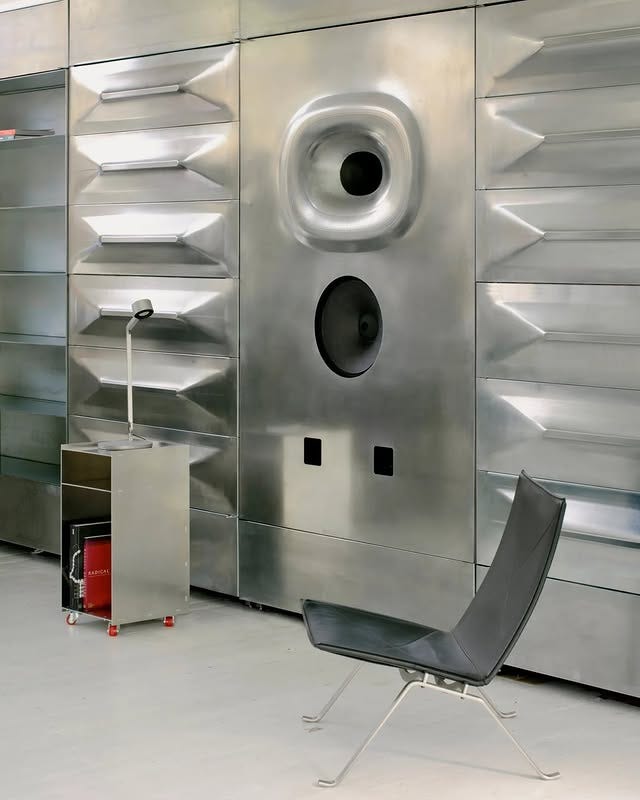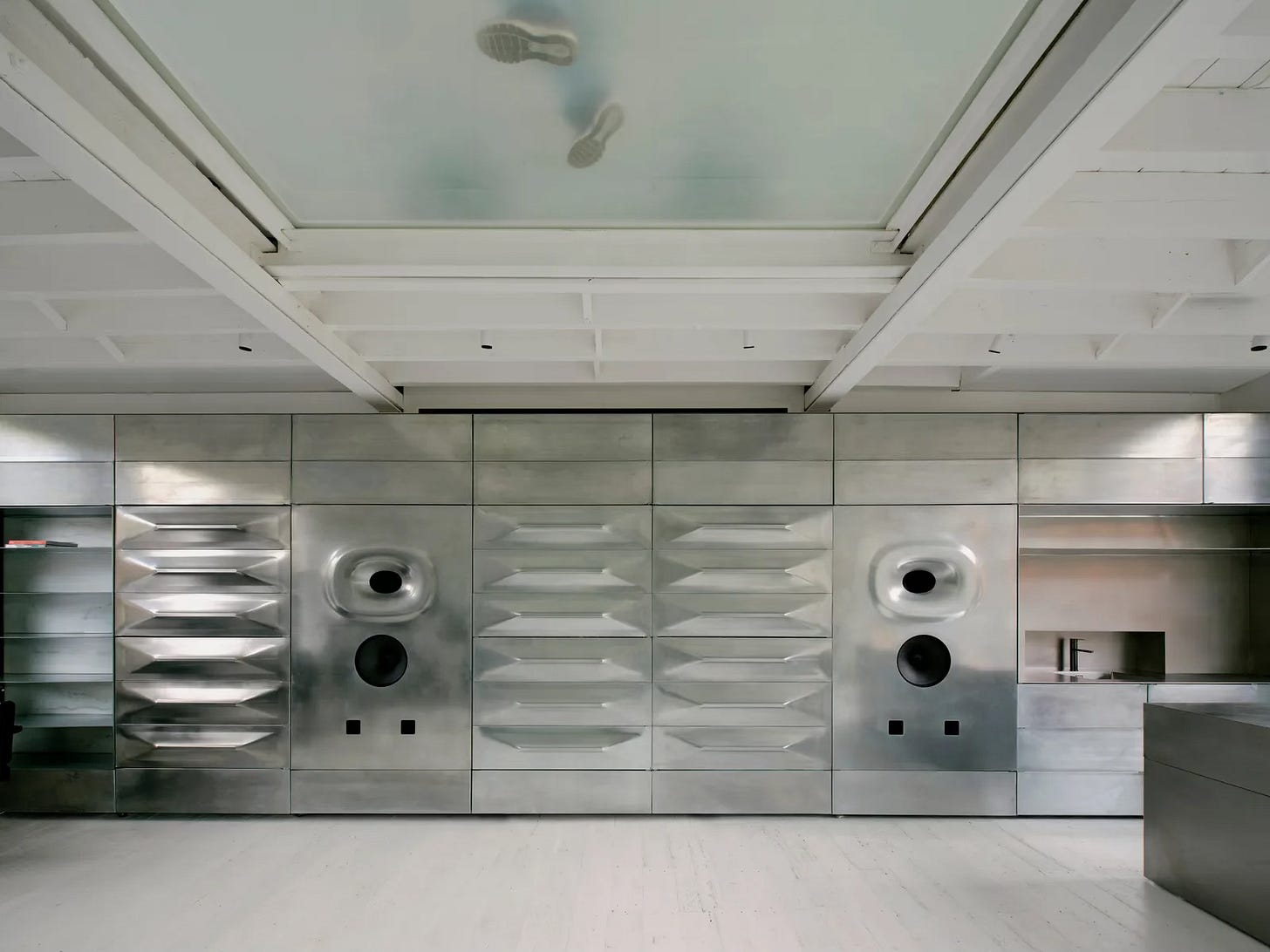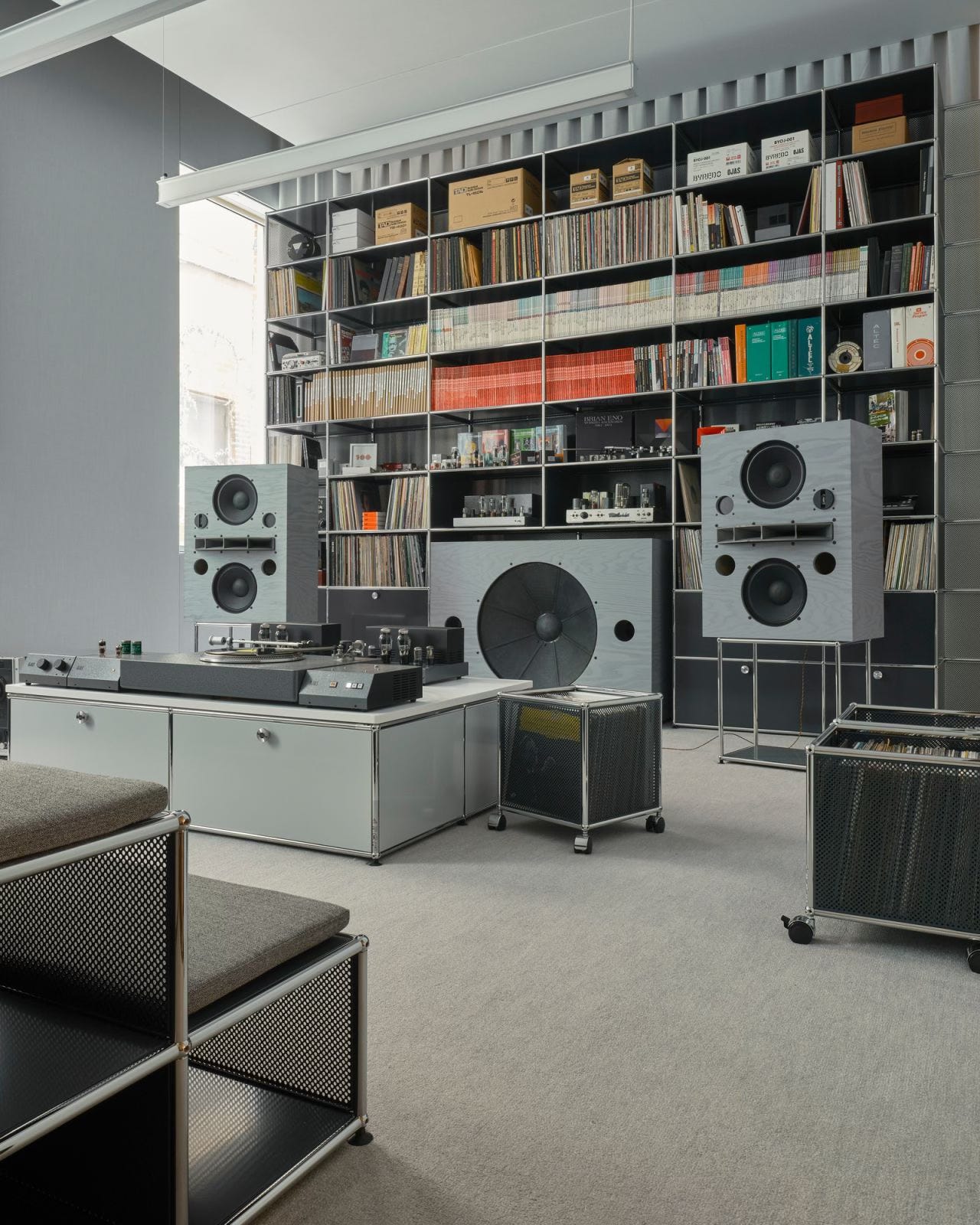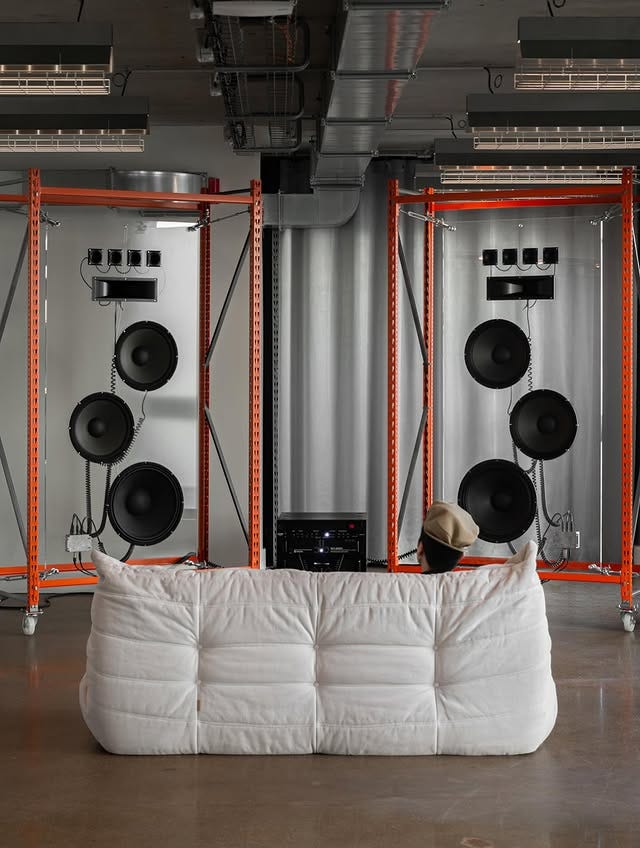Good evening. When I saw this beautiful silver visual pop up on my Instagram feed, I didn’t realize it was actually my hairdresser’s (SALT Salon) new Borough location—where I coincidentally have an appointment tomorrow.
I’ve only ever been there (at my hair salon) for fringe trims and balyage (naturally), but apparently they also host record-label listening parties and live podcast-recording sessions (alongside women-only Hijabi Sundays). And the images of the space that struck my attention the most turned out to be a bespoke “sound wall.”
And not just any sound wall, but one that is built by London-based specialists Friendly Pressure—the same people behind the sound system at Space Talk, a very nice hi-fi listening bar in Farringdon. The serious consideration of sound gave me a lot of joy.
I then started thinking a bit more about soundsystems—architecturally, spatially, socially, culturally. I feel serious sound popping up everywhere in spaces that are not primarily dedicated to the experience of sound, alongside new listening bars—at least seems to be the case in London and I’d definitely love to do a review of a few in a future post if I get enough encouragement… In these spaces, sound is present, yes, but so are the soundsystems that become an aesthetic identity: lofi vibe with hifi sound. A decade ago, home stereo was becoming obsolete as streaming and headphones started to replace big speaker setups, and from an architectural perspective, I’m actually excited by the newfound volumes that sound is able to take up spatially and creatively.
Inside this week’s letter are some cultural and contemporary examples of soundsystems. Not a guide to the “best” home speakers though (I’ll leave that to the audio guys), but a look at the ones that catch my eye, their design and relationship to space, as well as how they can be styled elegantly to reenter homes.
CONTEMPORARY EXAMPLES
OJAS listening room at USM New York showroom is an installation—“an acoustically-optimized space that delivers an outstanding sonic and aesthetic experience”—by the Brooklyn-based “speaker sculptor” Devon Turnbull. As far as furniture goes, I can’t think of anything better than USM Haller to be paired with a hifi soundsystem—that, and apparently Togo couches which seem to be in every frame where there’s an intricate and iconic domestic sound setup.
Blitz Club in Munich is praised as one of the best clubs for its sound system. Founded in 2017 and housed in a former museum, BLITZ has a custom-built Void Acoustics system across three floors, but their most unique feature is the four custom “Blitz Horn” 360-degree high-frequency units lining up directly above the dancefloor. These units are used to create a spatial effect and move the sound around the dancefloor at the DJ’s command:
David and Laurin share the view that a sound system is an instrument. For David, “you don’t just play tracks – it’s the way you play the tracks. By changing the frequency and velocity, you can create tension by building it up, almost hypnotising your audience.” The Blitz Horn, exclusive to this club, is a 360-degree high-frequency tweeter flying above the dancefloor as opposed to hanging down, making it possible to fire sound outwards. “The DJ can control the volume to whatever level desired to achieve different acoustic effects.” Configuring the sound system in this way means that when the hi-hat is heard, “the sound feels like it’s coming down like rain. Your arms naturally want to go up in the air and once there, when the bass kicks in, you’re defenceless to it so it really hits you.”
Matéo Garcia Studio’s loudspeakers for the young Japanese brand @vowels.official has concrete horns!!
The concrete horns and the aluminium echo the architectural codes of their New York store. The horns, made of concrete, feature a fully wooden internal frame and follow the exact curves of the legendary TAD TH4001 horns. Their design draws from the world of abandoned coastal bunkers, interpreted in a more abstract and sculptural manner.
On the other hand, (moving from Brutalism to Modernism?) I don’t know how I feel about transparent units. This Crystal Radio designed by Franco Albini costs $20k and (because?) it’s limited edition of five hand wired pieces. I like the curiosity: it is developed from an intuition to expose to public how the technology works by putting the electrical components in plain view. A bit like the pipes and circulation at facades of Centre Pompidou. I think transparency though takes away their “object”hood, though here’s another one (and notice the Togo!!):







